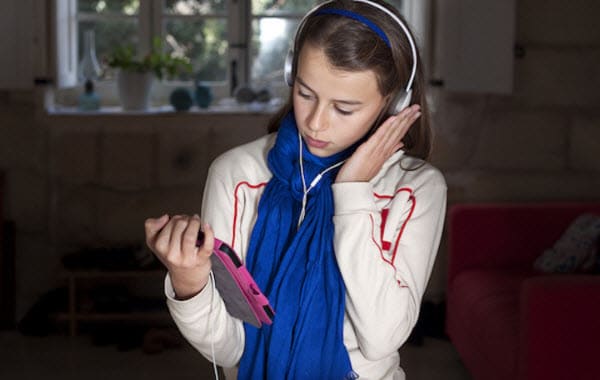DO: Have Clear Boundaries and Limits
Sit your children down and talk to them about their screen time and how they use their devices. Ask them how and why they use screens; how much time is spent on homework, how much on games, and how much chatting with friends? Once you establish that, then set boundaries, like time limits, lists of sites they can visit, and rules of behavior, and make clear why you’re setting them. You have the final word, of course, but let your kids feel like they’re participating and they have a say in how they use screens.
DON’T: Model Bad Behavior
Kids learn about life and how to deal with it from their parents. Do you spend all night bingeing on Netflix? Do you goof off on your phone for hours on the weekend? If you do, and you’re asking your children not to do those things, then you may need to put the phone down yourself.
DO: Use Parental Controls
The internet can be a child-unfriendly place — not just in the obvious ways —and kids simply may not understand what they’re looking at. One parent has a hilarious cautionary tale about her child, who loves Frozen, and how they handed her a phone without a restricted YouTube app. It’s an extreme example, but it illustrates how even seemingly “safe” sites can go downhill fast for parents.

Screen time needs boundaries.
DON’T: Ignore What They’re Doing Otherwise
The internet, for better or for worse, is part of our lives, just like work, school, and friends. And just like those things, there’s positive interactions and negative ones. Kids aren’t necessarily going to open up spontaneously about problems like bullying or other emotional cruelty, or they might be talking to people who seem rational but might not have positive ends. Does it matter what your child might be talking about with a person calling themselves HotTime4U, even if there’s nothing wrong with the chats you see? Even if all their time online is positive, make a point of asking about it. It’s a part of their life, and remember it’s a two-way street.
DO: Embrace the Anger
There are going to be points where you’ll have to take the internet away from your children. Even the best kids will occasionally break the rules. And if kids have formed specific habits to this point, they may not enjoy breaking them. That’s OK. Kids will be angry!
DON’T: Let It Go Unremarked
But, once they’ve calmed down, talk to them about what happened, make sure they understand why it happened, why parental control is necessary, and why their reaction isn’t OK. Use a lack of access as a teaching moment. Help them understand why they’re so attached to the internet, and question their use of it for everything. Ideally, as your kids get a better sense of boundaries and what’s healthy and what’s not online, it won’t be a conversation you’ll have to have too often.
If you’re ready to start setting boundaries, we can help. Contact us about how to build a better, healthier relationship with screens.


Join the conversation